Several hours into day two of our musky hunt, a satirical air still hung about the boat. My friend and fellow musky nut, Rob Rogers of Deep South Outfitters, summarized it perfectly as we shoved off into a steady downpour and biting wind under a leaden sky–conditions we’d both been hoping for.
“Why the hell do people want to do this?”
It’s a valid question.
It was winter in the south, and though it had so far been a mild one, the water temperatures had dropped into a winter range, pushing the fish into wintering holes. Such conditions represent one of the year’s windows of predictability in the musky game. Know the river and understand the habits of the fish, and you can have a general idea of where the vast majority of its fish will be concentrated during the coldest months of the year. And in a game of attrition and probability —one played with 12-weights, foot-long flies, and sinking lines—predictability is invaluable. The next questions a musky hunter has to ask are “where within those areas should they be, when, and why?” And of course, “when will they eat?”
At the outset, we plied the slack waters of a creek mouth hole—a regular haunt for both the fish and myself, ripe with winter structure and personal angling history—to no avail. After giving it its due, we pushed down the river, probing B spots and watching the surrounding mountains get pounded by rain.
Bouncing through a shoal above our next wintering hole, I noticed a change. A tributary was pumping in dirty water from the north, pushed tight to the bank in the swift current, but it was spreading out across the pool as we slowed down and entered the belly.
“I’m going to pull off the bank and ride this mud line down,” I said. “Just chuck across it.”
Rob was game, and from our position about 40 feet from the line of dirty creek water, began shooting casts into the brown water and fishing them rapidly back.
When his Fat Fred—a bucktail streamer of his own design—came dancing out of the stain and into the clear, anticipation was high, but it returned to the boat and figure-eighted around the bow unmolested. On his second cast, just as Fred’s silhouette began to appear in the clear water, it was engulfed in a green flash and a slight tug, but the fly kept coming, and the figure-eight yielded nothing.
“I think that was just a smallmouth,” Rob offered dismissively.
“I’m highly skeptical that that was a smallmouth,” I shot back. “Toss that thing in there again and speed it up.”
This time, just as the fly was exiting the creek water and making a mad dash for the boat, a green torpedo erupted from the depths and caught the fly broadside in a wide mouth of razor-sharp teeth. A seasoned strip set put into motion a series of violent head shakes and writhes, and in just a few seconds, the day’s first musky was in the net.
As a guide, these moments put me on Cloud 9. Everyone likes to see their hunches and learned patterns play out, but to have such a thing happen in conjunction with putting a creature as elusive as a musky in the boat, while putting to bed what may be some of the greatest performance anxiety in the sport, is just spectacular.
Still, the mud line pattern is not a revolutionary one. No magnificent discovery on my part, but a fine example of something I’m always considering and keeping an eye out for when targeting opportunistic predators like musky, smallmouth bass, brown trout, or stripers. Sharp gradients. Big changes.
Predatory fish are masters of their environment. They have little to fear, and know how to make a living. That is, they know how to feed efficiently, which means taking advantage of windows of opportunity.
When a mud line forms on your local river, two things are almost always true. First, it’s probably raining, or has recently rained, and the light is low. Second, there is probably an increase in streamflow mounting, either as a result of the muddy tributary dumping its watershed, a responsive release from a dam, or a general increase in flow due to water falling in the watershed—or all three. Add to these factors the fact that a hard water clarity line now exists in this same environment, and you have an ambush predator’s wet dream.

When a creek is dumping dirty water into a system another thing happens that changes the environment. With that source of dirty water comes a plethora of detritus and macroinvertebrates—food for primary consumers and baitfish. And so the food chain moves. First the macroinvertebrates, then the baitfish, and the top predators are soon to follow.
Nothing concentrates and incentivizes active predators to feed like a fresh mud line.
There are an endless number of other locating and timing mechanisms that can influence the behavior of predatory fish, from large changes in streamflow and abrupt water temperature gradients to hard shade lines along a bank and the rapid changing of light levels that occurs twice daily at sunrise and sunset. And as a general rule, the more isolated or limited the timing of these events, the more valuable they are. The lower and clearer the water, and the brighter the sky, the more valuable darkness is to a low-light feeder. And the longer the water has been warm and oppressive, the more valuable a quick drop in water temperature is.
As an angler, having regular encounters with large predatory fish requires being able to identify these windows and put yourself in a position to take advantage. And often—or, almost always—that very effort requires being on the water when things are least comfortable.
Fresh mud lines don’t develop on bluebird summer days. Total darkness doesn’t happen between the hours of 9 AM and 5 PM. And big fish don’t slip up and feed when it doesn’t suit them. So you have to be there when it does.





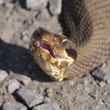





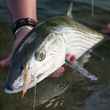
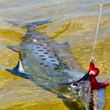













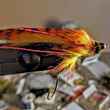


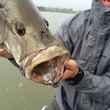
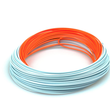
Comments